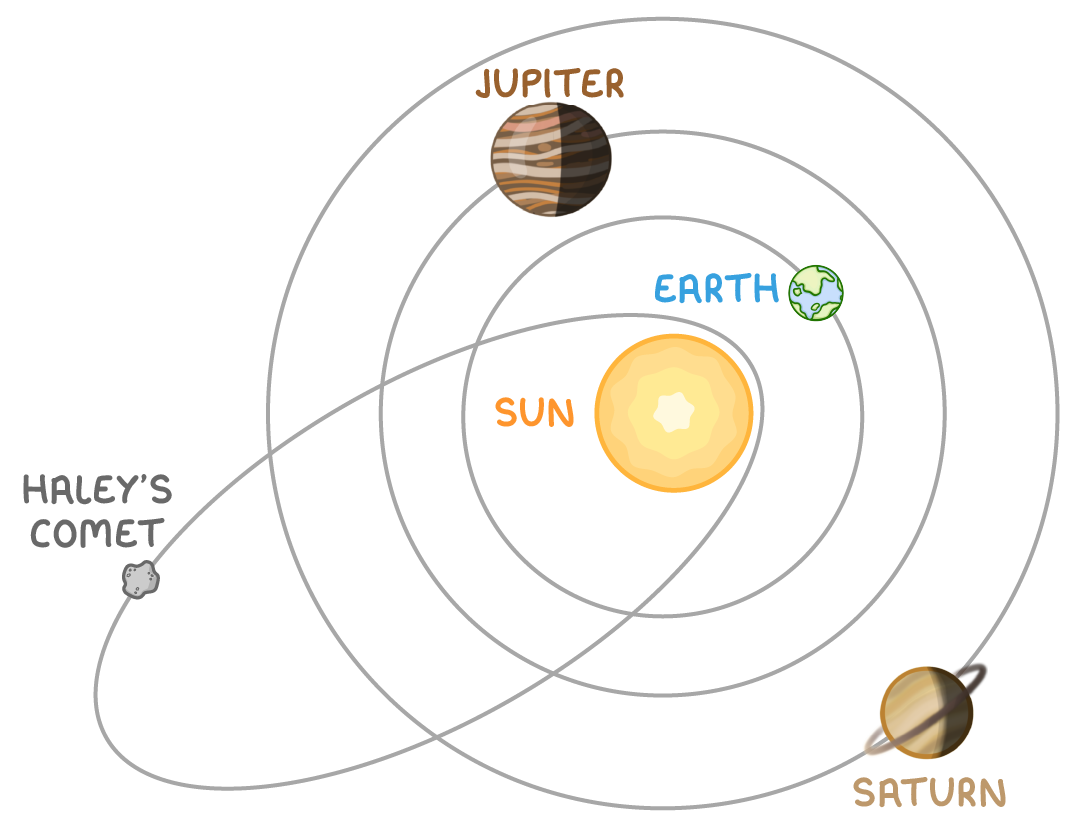Astronomical Objects
This lesson covers:
- Understanding that the universe encompasses all existing matter and energy
- Defining our solar system and its key components
- Explaining elliptic and circular orbits of planets, comets and asteroids
The scale of the universe
- The universe constitutes everything that exists, both visible and invisible. This spans glowing stars to unseen dark matter.
- Our Milky Way galaxy is a gravitationally bound cluster of stars, planets, gas and dust.
- At the centre of our galaxy is our solar system - the Sun and all objects orbiting it.
Components of our solar system

Our solar system includes:
- The Sun - The star at the centre of our solar system.
- Planets - There are 8 major planets orbiting the Sun: Mercury, Venus, Earth, Mars, Jupiter, Saturn, Uranus and Neptune.
- Dwarf planets - Pluto and other smaller planet-like bodies.
- Moons - Natural satellites like our Moon orbiting planets.
- Asteroids - Rocky objects mostly found in the asteroid belt between Mars and Jupiter.
- Comets - Structures made of ice and dust that have elliptical orbits around the sun.
The nature of orbits

- The 8 major planets approximately follow circular orbits around the Sun.
- Comets typically have highly elliptical orbits, with periods lasting millions of years.
- Some shorter-period comets like Halley's comet (76 year orbit) originate closer in.
- The asteroid belt occupies the space between Mars and Jupiter.